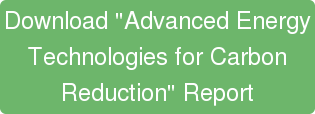 U.S. Environmental Protection Agency held regional hearings on its draft rule for carbon emissions from the electric power system – called the Clean Power Plan – this week, and AEE, our Partners, and our members were well represented. As incumbent energy interests decried imagined impacts and environmental groups touted health and climate benefits, AEE and its allies testified that EPA’s emissions targets would be “easy to achieve” with advanced energy technologies – and spark investment to modernize the electric power system for the 21st century and spur economic growth.
U.S. Environmental Protection Agency held regional hearings on its draft rule for carbon emissions from the electric power system – called the Clean Power Plan – this week, and AEE, our Partners, and our members were well represented. As incumbent energy interests decried imagined impacts and environmental groups touted health and climate benefits, AEE and its allies testified that EPA’s emissions targets would be “easy to achieve” with advanced energy technologies – and spark investment to modernize the electric power system for the 21st century and spur economic growth.
An estimated 1,600 people were slated to testify at the four public hearings, each of which was scheduled for two days. AEE and member company Opower testified at the Washington, DC, hearing. Arkansas Advanced Energy Association delivered testimony in Atlanta, and Interwest Energy Alliance and member company Johns Manville did so in Denver. In Pittsburgh, Keystone Energy Efficiency Alliance is scheduled to testify today.
AEE’s testimony expressed support for the Clean Power Plan based on its potential for economic benefits and electric system improvement, calling it “a historic opportunity.” Meeting EPA’s state targets will be “easy to achieve,” we explained, because of the flexibility EPA is offering states and the wide range of technologies approved by EPA as eligible compliance measures.
In the plan, EPA mentioned several advanced energy technologies by name, including demand-side energy efficiency, renewable energy, fuel switching to natural gas, transmission efficiency improvements, and energy storage. In testimony, AEE urged EPA to explicitly recognize the 40 technologies described in AEE’s Advanced Energy Technologies for Greenhouse Gas Reduction report as compliance options for states.
In addition, AEE pointed out ways that EPA’s draft rule “underestimates the potential contribution of advanced energy technologies,” renewable energy and energy efficiency, in particular.
By setting targets based on averages of existing state renewable energy policies, for instance, the plan fails to account for rapid market growth based on technological improvements and falling costs. Minnesota’s 2030 renewables target is set at 15% when the state already obtained 18% of its electricity from non-hydro renewables in 2012.
In the case of energy efficiency, AEE validated, based on industry experience, EPA’s expectation that states can obtain 1.5% per year savings from electric utility-administered programs created by state energy efficiency resource standards. But AEE pointed out that EPA’s target for energy efficiency does not account for considerable private-sector investments made outside of utility programs.
As a result, AEE called on EPA to “build on this solid foundation” of the draft plan by:
- strengthening the targets set for advanced energy technologies;
- allowing periodic review of targets to reflect technological progress; and
- rewarding early use of these technologies
Testimony by AEE partners and companies hit on similar themes. AAEA’s Ken Smith testified that strengthening standards for renewable energy and energy efficiency in Arkansas “would achieve a higher carbon emissions reduction level and create unprecedented economic development and job growth in the state’s advanced energy industry.”
Sarah Cottrell Probst of Interwest Energy Alliance, which represents renewable energy companies in six states, testified that “EPA’s assumptions in the draft rule related to renewable energy significantly underestimate the amount of timely and cost-effective reductions available from these sources. The final rule can and should require emissions reductions that go further, faster than proposed in the draft rule.”
In testimony that will be delivered by executive director Brian Kauffman, KEEA argues that “jobs will be created in the state as a result of the Clean Power Plan,” and “by increasing investment in energy efficiency, Pennsylvania can get much closer to the Plan’s goal, and it can do so quickly.”
And in the D.C. hearing, Richard Caperton of Opower told EPA “your proposal allows utilities to use beyond the fenceline measures – including energy efficiency – to comply with these reduction targets. This will lead to innovation in the energy sector and help utilities use the full suite of tools to reduce pollution.”
These regional hearings are just the beginning. AEE will continue to work with our business members and state and regional partners toward an improved final Clean Power Plan over the next year.
